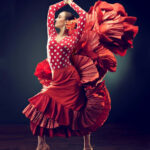Patrick Makuakāne, the artistic director of Nā Lei Hulu I Ka Wēkiu, a celebrated dance company based in the Bay Area, stands at the forefront of contemporary Hawaiian dance. His work masterfully blends the deep-rooted traditions of hula with modern sensibilities, creating performances that are both captivating and profoundly meaningful. In anticipation of Dance Mission Theater’s D.I.R.T. Festival 2019, which featured his thought-provoking piece storm SURGE, Makuakāne shared his insights into why Hawaiian dance, or hula, serves as a powerful medium for addressing pressing contemporary issues like climate change, and offered a deeper understanding of hula’s place in today’s world.
When initially approached to participate in the D.I.R.T. Festival, Makuakāne reflected on the intrinsic nature of Hawaiian expression. He recognized that within Hawaiian culture, conveying messages indirectly through metaphor is a deeply ingrained practice. This approach, he explained, stems from the belief that meaning resonates more powerfully when it is discovered rather than explicitly stated. Nature, in all its forms, becomes the central metaphor in Hawaiian chants, poems, and songs. This pervasive use of natural analogy reflects the profound connection Hawaiians have with their environment, where nature is not merely a backdrop but an integral part of life’s narrative.
This realization sparked the inspiration for storm SURGE. Makuakāne considered a recent alarming report detailing the devastating impact climate change is projected to have on Hawai’i within a century. Rising sea levels, increased coastal flooding, and the potential submersion of low-lying island areas, including critical infrastructure like airports, paint a stark picture of the future. He contemplated how these dramatic environmental shifts would inevitably alter the very fabric of Hawaiian cultural expression, particularly in chants that traditionally reference specific geographical landmarks. Would these songs transform into cautionary tales, or could they still evoke themes of love, lineage, and a cherished homeland in the face of such profound change? Climate change, he realized, would not only reshape the physical landscape but also the artistic and musical soul of Hawai’i.
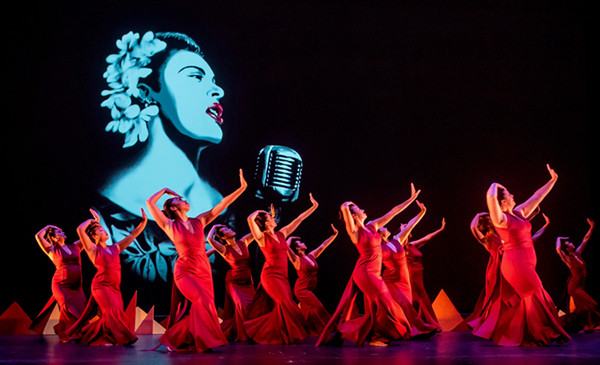 Patrick Makuakane 2 Photo by Patrick Kelley
Patrick Makuakane 2 Photo by Patrick Kelley
Photo by Patrick Kelley
Makuakāne’s choreographic process for storm SURGE and his other works is deeply rooted in the traditions of hula, yet embraces a contemporary vision. Unlike many modern dance forms, traditional Hawaiian dance pieces are often concise and potent. For the D.I.R.T. Festival, his presentation included four distinct pieces, beginning with a chant by Wahinekeouli Pa, a revered 19th-century master chanter from Kaua’i. Her composition, “Aloha Mai Au I Ku’u Aina,” meaning “I dearly love my land,” perfectly exemplifies the Hawaiian practice of using natural imagery to narrate a story. Makuakāne noted that while the sentiment might seem simplistic in English, in Hawaiian, the chant resonates with profound depth. Pa elaborates on her love for her land through vivid metaphors of winds, rain, and ocean, setting a powerful tone for Makuakāne’s subsequent pieces.
Building upon this foundation, the performance transitioned into a piece interweaving chants about rain and love with the English song “Cool Water.” This juxtaposition highlighted the theme of water as both a life-giving force and a precious resource, especially relevant in the context of climate change predictions for Hawai’i, which include severe droughts and floods. The performance then progressed to honor Pele, the Hawaiian volcano deity, embodying the duality of destruction and creation inherent in volcanic activity.
When creating contemporary Hawaiian dance pieces addressing themes like climate change, Makuakāne navigates the delicate balance between honoring tradition and embracing innovation. He incorporates both authentic, time-honored hula movements and re-imagined, contemporary interpretations. Traditional Hawaiian chants, he explained, prioritize the power of words over melodic variation. The richness lies in the narrative conveyed by the lyrics, not in complex musical arrangements. However, with Western influences, particularly from missionary hymns, Hawaiian chants gradually incorporated more melodic elements.
Similarly, the movement vocabulary of hula has evolved. Traditional hula movements are often subtle and contained, with hand gestures serving to subtly enhance the poetry rather than explicitly illustrating it. In contrast, modern hula, or hula ‘auana, often employs more descriptive hand motions, visually depicting elements like the sun, rain, and flowers. Makuakāne emphasizes that in ancient hula (hula kahiko), the poetry itself carries the narrative weight, while gestures add depth and nuance. The evolution of movement in hula reflects a contemporary perspective while staying rooted in tradition.
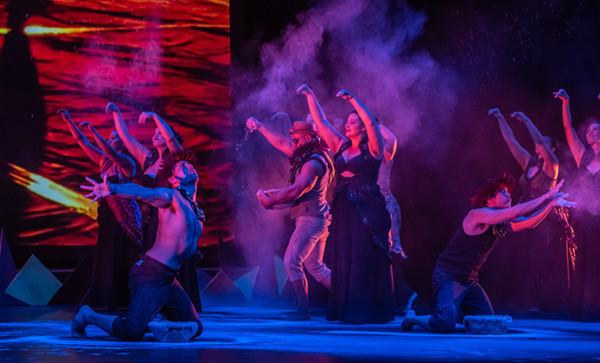 Patrick Makuakane 5 Photo by Patrick Kelley
Patrick Makuakane 5 Photo by Patrick Kelley
Photo by Patrick Kelley
Hula is broadly categorized into two main forms: hula kahiko and hula ‘auana. Hula kahiko, meaning “ancient hula,” is characterized by its accompaniment of chanting and percussive instruments like drums, gourds, and rattles. Hula ‘auana, the more contemporary form, typically features singing and Western instruments such as guitars, bass, and ukuleles, and emerged in the late 19th century. Makuakāne points out that these categories are not always rigid, as many dances blend elements of both. Interestingly, the term ‘auana, meaning “to wander or drift,” suggests that these dances were seen as diverging from the traditional protocols and sacred rituals associated with the kuahu (altar) dedicated to the hula deities.
Identifying hula movement today involves recognizing its intrinsic connection to nature. Many hula movements directly mimic natural phenomena—ocean waves, rainfall, wind through trees. Understanding hula, like any traditional art form, requires either practice or familiarity with its fundamental movements and lineage. Makuakāne stresses that his company is fundamentally a hula company. His dancers are rigorously trained in hula traditions. When introducing new movements, even those inspired by other dance forms like the Lindy Hop (which he incorporated in a past performance), the foundation remains hula. This approach involves a constant interplay between tradition and innovation, “touching the cornerstone of hula, and then jumping off the cliff while still staying tethered.”
Hula holds a central position in the social fabric of Hawaiian culture. During the Hawaiian Cultural Renaissance of the 1970s, hula became a vital vehicle for exploring and reclaiming Hawaiian identity. For many Hawaiians, including Makuakāne himself, hula provided a profound connection to their heritage. Hula serves as a living encyclopedia of Hawaiian culture, encompassing mythology, history, genealogy, the pantheon of gods, the deep relationship with nature, and expressions of love and respect for the environment. Through hula, one learns about Hawaiian values, beliefs, and perspectives on everything from interpersonal relationships to agriculture, astronomy, and the ocean. Makuakāne emphasizes that hula is deeply interwoven into the very essence of Hawai’i and remains one of its most crucial cultural practices. The embodied experience of learning and living culture through dance is unparalleled.
Despite its profound cultural significance, hula often faces stereotypes. Many perceive it as a simplistic dance, devoid of depth and meaning, often reduced to clichés of grass skirts and superficial movements. However, Makuakāne passionately counters this misconception, highlighting the immense depth, history, and cultural knowledge embedded within hula. It is, he asserts, the story of Hawaiian culture, a story he and his dancers are privileged to embody and share. The enduring commitment of his dancers, some with him for over 25 years, speaks to the powerful cultural connection fostered through hula.
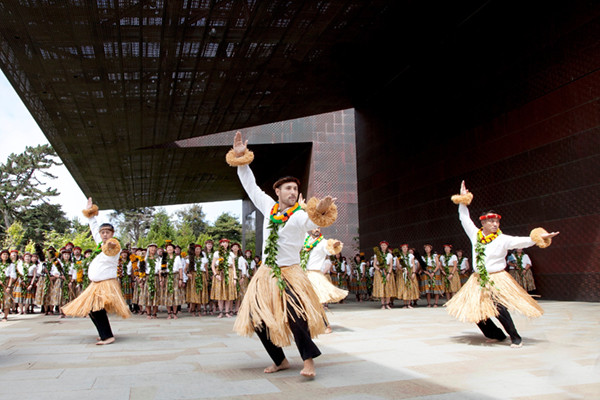 Patrick Makuakane 6 Photo by Lin Cariffe
Patrick Makuakane 6 Photo by Lin Cariffe
Photo by Lin Cariffe
The practice of hula differs significantly both within and outside of Hawai’i. Currently, Hawai’i is experiencing a “renaissance of knowledge,” a resurgence of cultural understanding and practice across all disciplines. Makuakāne is consistently impressed by the younger generation in Hawai’i, who are deeply informed and fearless in their cultural pursuits. This vibrant cultural environment in Hawai’i enriches the understanding of hula in profound ways. Makuakāne frequently returns to Hawai’i to bring back knowledge and inspiration to his students in San Francisco.
However, the Bay Area offers unique advantages for hula. San Francisco and California, in general, provide greater arts funding compared to Hawai’i, where limited resources often strain the arts community, including numerous hula schools. Nā Lei Hulu I Ka Wēkiu thrives in this supportive environment, allowing them to operate at a level unattainable in Hawai’i.
While hula is deeply associated with Hawai’i, its global reach is expanding dramatically. Japan, surprisingly, has a massive hula community, larger than that in Hawai’i. Mexico and other parts of the world are also witnessing growing interest in Hawaiian dance. This global expansion raises questions about maintaining authenticity and balance as hula travels beyond its origins.
Returning to the theme of the D.I.R.T. Festival, Makuakāne emphasized hula’s unique position to respond to climate change, particularly given Hawai’i’s vulnerability as an island nation in the Pacific. His research for storm SURGE underscored the urgency of the climate crisis. While reversing the course of climate change may be daunting, mitigation efforts are crucial. Makuakāne suggests that hula festivals could serve as platforms to address climate change, raising awareness and inspiring action. Historically, Hawaiians were pioneering conservationists, living sustainably within the limited resources of their island environment. Their sophisticated aquaculture systems and deep understanding of natural cycles demonstrate a forward-thinking approach to resource management. Today, cultural practitioners are revitalizing and sharing these ancestral practices. However, the impact of human-induced environmental changes is already evident, and the future for Hawai’i in the face of climate change is deeply concerning, both culturally and physically. Hula, as a living embodiment of Hawaiian culture and its connection to nature, serves as a potent voice in this critical conversation.
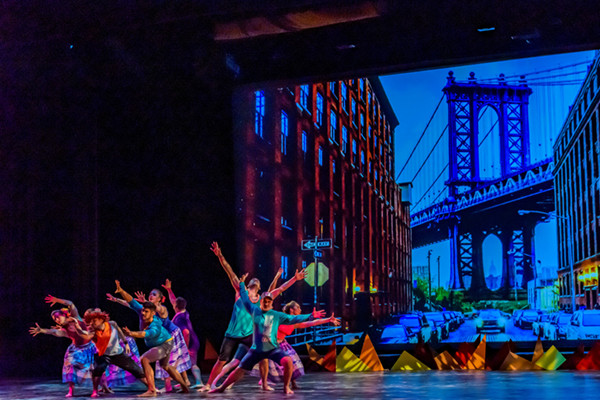 Patrick Makuakane 4 Photo by Kyle Adler
Patrick Makuakane 4 Photo by Kyle Adler
Photo by Kyle Adler
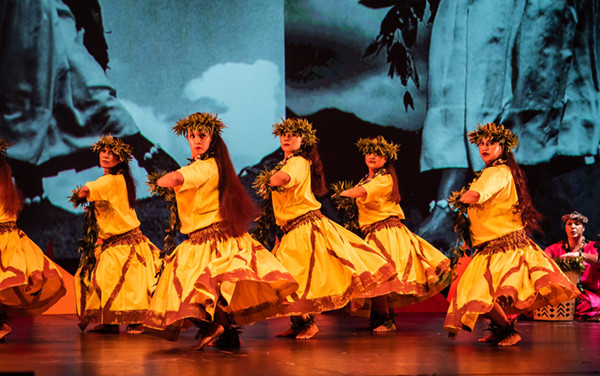 Patrick Makuakane 3 Photo by Patrick Kelley
Patrick Makuakane 3 Photo by Patrick Kelley
Photo by Patrick Kelley
To delve deeper into Patrick Makuakāne’s innovative work, visit naleihulu.org. Further information about the D.I.R.T. Festival 2019 can be found at dancemissiontheater.org/2019/01/04/dirt-festival-2019.

